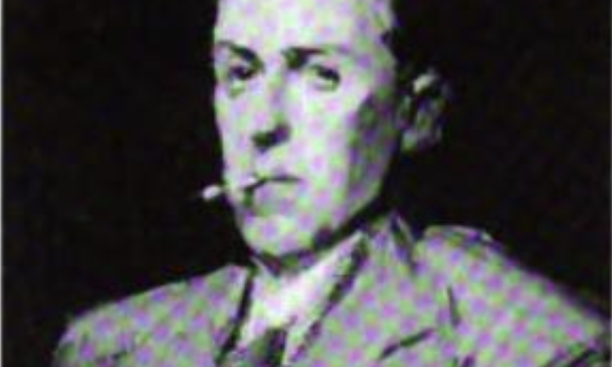
Frances Saunders, a writer in Pittsboro, North Carolina, is the author of Ellen Axson Wilson: First Lady Between Two Worlds (University of North Carolina Press, 1985).
A year ago, on January 23, 1991, the Princeton Alumni Weekly published on its cover a portrait of Woodrow Wilson. It depicted a dissolute-looking Wilson, with a cigarette dangling from his mouth – a shocking portrayal of the straight-laced Princeton president, who once told a friend that he could never kiss with lips that had been fouled by tobacco.
This was at least the second time that PAW had reproduced the painting, which has been doubtfully attributed to the American artist Robert Henri (pronounced hen-RYE). In its issue of June 7, 1966, PAW used the portrait to illustrate an article, noting that William Benton, an art collector and the chairman of the Encyclopaedia Britannica, had given the portrait to the university, and that it hung in 1 Nassau Hall, the office of the president (then Robert F. Goheen ’40 *48).
Benton had purchased the portrait from the Hirschl & Adler Galleries, in New York City, in 1961, and had originally given it to Harry S. Truman for his Presidential library, in Independence, Missourt. At the time, Hirschl & Adler was the agent for Henri’s works. Goheen and Benton both happened to sit on the board of the Woodrow Wilson Foundation, and after Goheen mentioned to him that Princeton possessed no first-rate portrait of Wilson, Benton resolved to give the “Henri” painting to the university. Truman agreed to a trade and received in exchange the Wilson portrait by Seymour Thomas that had hung in the Cabinet room during his Presidency.
In 1978, Arthur S. Link, a history professor at Princeton and the editor of The Papers of Woodrow Wilson, thought of using it to illustrate a forthcoming volume of The Papers. I was then working on a biography of Wilson’s first wife, Ellen Axson Wilson. Doubtful of the portrait’s authenticity, Link asked me to investigate.
My research took me to the Art Students League, in New York City, where Henri had worked or taught from 1912 to 1928, a year before his death. The archivist there had never heard of a Wilson portrait by Henri and could find nothing about it in the league’s voluminous records. Nor did a biography of Henri by William I. Homer ’51, formerly an assistant professor of art history at Princeton, mention the Wilson portrait. It was “quite obvious,” he told me, that “the portrait was not by Henri’s hand.”
Furthermore, I learned, Henri himself – concerned that paintings he hadn’t done might one day be attributed to him – kept meticulous records of each of his works. He referenced each entry with a number-letter code and provided a written description and a pen-and-ink sketch of each composition. His records fill fourteen volumes, each of more than three hundred pages. Henri’s niece-by-marriage and heir, Janet LeClair, and I each searched these record books but found no mention of a Wilson portrait, an omission she regarded as “unthinkable” if the painting were authentic. Through Hirschl & Adler, I also attempted to retrace the ownership of the portrait, but none of the previous owners ever had a painting by Henri.
The only documentation I could find in support of the attribution to Henri was a memorandum from William Benton that accompanied the gift to Princeton. Benton reported that “The manager of the Hirschl & Adler Galleries told me when I bought the painting that Woodrow Wilson’s daughter had told him, ‘This is the only picture f father extant which shows him smoking a cigarette.’” Given Wilson’s documented aversion to tobacco, this statement is to be doubted. At the time of purchase, Benton continued, the upper right corner had borne the following caption in black paint: “Woodrow Wilson, Governor of New Jersey, 1912.” These words were later accidentally obliterated, Benton added, when his secretary had tried to clean them with a damp cloth.
With the help of Frances Jones, a curator at Princeton’s Art Museum, I then examined the back of the painting for one of Henri’s codes but found none. Because the portrait had received a new backing and supportive frame, Jones had a conservator, Bernard Rabin, remove the canvas for more detailed study. She later wrote me that Rabin “has looked at the portrait of Wilson under infra-red light and reports that there is nothing visible on the back of the old canvas that is covered by the relining.” But using “a strong, raking light,” he was able to make out an inscription on the upper right corner: “Hon. Gov. Wilson of New Jersey.” In the upper left corner, wrote Jones, “we can make out, with difficulty, Henri; it is probably preceded by Robert, but any letters are fugitive. No sign of a date.” She added, “Mr. Rabin has worked on several paintings by Henri and says there is no doubt in his mind about authorship” – a vote in the affirmative.
Rabin’s assertion notwithstanding, those closest to Henri’s work continue to regard the painting as a forgery. In a letter to Jones, LeClair wrote, “I should like to appear on record as denying the attribution of this painting to Henri. I would appreciate its not being reproduced with Robert Henri’s being designated as the painter.”
To my mind, the evidence is convincing that the portrait is not by Henri. But the true painter’s identity remains a mystery. PAW’s attribution to Henri raises the question of what happened to LeClair’s request. (In its issue of March 6, 1991, PAW acknowledged that it should have said the portrait is “doubtfully attributed” to Henri.) The portrait was not, of course, used as an illustration in The Papers of Woodrow Wilson, and it continues to hang in 1 Nassau Hall.
This was originally published in the January 22, 1992 issue of PAW.
